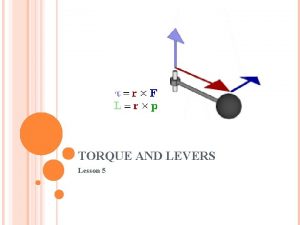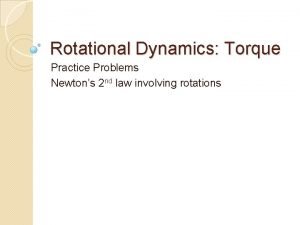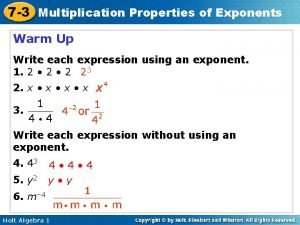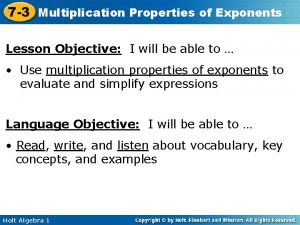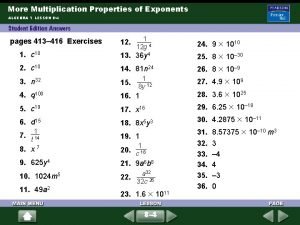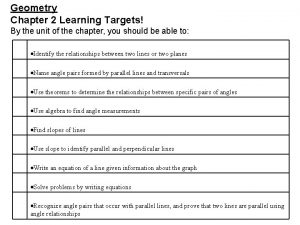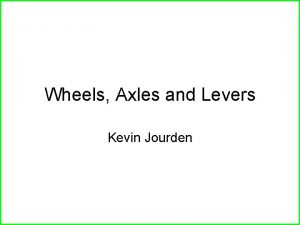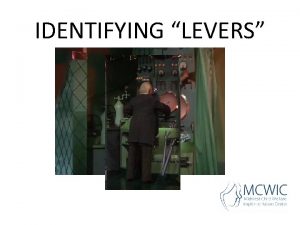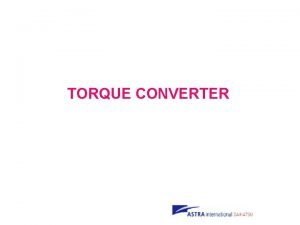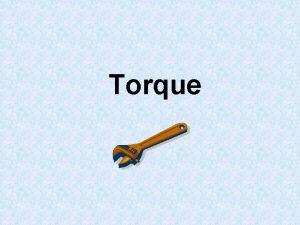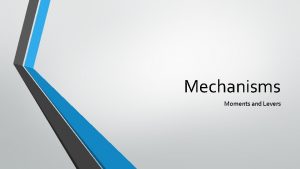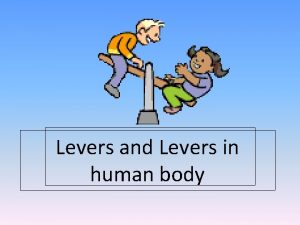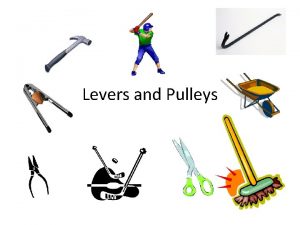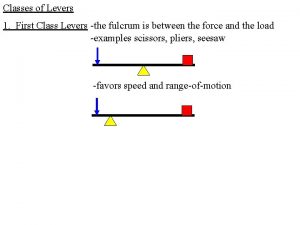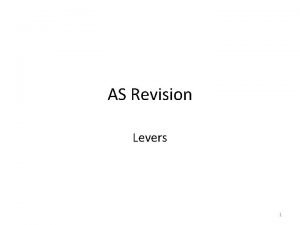Levers and Torque More Practice Levers and Torque

















- Slides: 17

Levers and Torque: More Practice

Levers and Torque: More Practice

Levers and Torque: More Practice

Classes of Levers: Student Learning Goal The student will investigate the relationships between force, distance, and torque for the load arm and effort arm of the three classes of levers (C 2. 4, C 2. 5).

Classes of Levers SPH 4 C

1 st Class Levers A 1 st class lever has the fulcrum in the centre: The fulcrum may be positioned closer to the load or closer to the effort force.

1 st Class Levers A 1 st class lever has the fulcrum in the centre: Example: a seesaw

2 nd Class Levers A 2 nd class lever has the load in the centre:

2 nd Class Levers A 2 nd class lever has the load in the centre: Example: a wheelbarrow

3 rd Class Levers A 3 rd class lever has the effort force in the centre:

3 rd Class Levers A 3 rd class lever has the effort force in the centre: Example: the human forearm

Mechanical Advantage Revisited The ideal mechanical advantage of a lever is defined as the ratio of the effort arm to the load arm:

Mechanical Advantage Revisited The ideal mechanical advantage of a lever is defined as the ratio of the effort arm to the load arm: Note that for 3 rd class levers, the IMA will be less than 1!

Mechanical Advantage Revisited The actual mechanical advantage of a lever is defined as the ratio of the load force to the effort force: (and again, this may be less than 1)

Mechanical Advantage Revisited This mechanical advantage may be affected not only by friction but also by factors such as the weight of the lever itself.

Efficiency is, as before: Note that a lever can have a low (even less than 1) AMA and IMA but still have a high efficiency if the AMA is close to the IMA.

More Practice Three Classes of Levers Lab Activity
 Lirik lagu more more more we praise you
Lirik lagu more more more we praise you More more more i want more more more more we praise you
More more more i want more more more more we praise you Torque and levers
Torque and levers Rotational dynamics practice problems
Rotational dynamics practice problems Human history becomes more and more a race
Human history becomes more and more a race 5 apples in a basket riddle
5 apples in a basket riddle The more you study the more you learn
The more you study the more you learn Aspire not to
Aspire not to Newton's first law of motion examples
Newton's first law of motion examples Knowing more remembering more
Knowing more remembering more The more i give to thee the more i have
The more i give to thee the more i have More choices more chances
More choices more chances Myeplg
Myeplg 7-3 more multiplication properties of exponents
7-3 more multiplication properties of exponents 7-3 multiplication properties of exponents answers
7-3 multiplication properties of exponents answers 7-3 practice more multiplication properties of exponents
7-3 practice more multiplication properties of exponents Two column proof solver
Two column proof solver Let us practice
Let us practice


